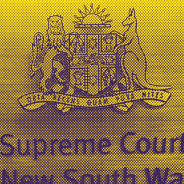A recent High Court case brought by the Australian Competition and Consumer Commission (ACCC) against TPG Internet has provided some direction on misleading and deceptive conduct in relation to ‘headline advertising’. The introduction of the Telecommunications Consumer Protections Code (TCP Code) has also increased restrictions on the way in which Telco services can be advertised.
This judgment and the TCP Code may be useful in discussions with Telco providers or in a complaint to the Telecommunications Industry Ombudsman.
Case Note: Australian Competition and Consumer Commission v TPG Internet Pty Ltd
Background
From late September 2010 to early November 2011, TPG Internet Pty Ltd (TPG) advertised its ADSL2+ service at $29.99 per month. However this offer was qualified by certain conditions: it was only available if bundled with a home telephone service (for an additional $30 per month), as well as a payment of a setup fee of $129.95 plus a deposit fee of $20 for telephone charges. In the advertisements, these material conditions appeared in significantly smaller text, with far less prominence than the ‘$29.99 per month’ offer.
The Australian Competition and Consumer Commission (ACCC) brought proceedings against TPG in the Federal Court, arguing that TPG’s conduct amounted to misleading and deceptive conduct under s 52(1) of the Trade Practices Act 1974 (Cth). The Federal Court found in favour of the ACCC. It held that the dominant message of the advertisements was the fact that TPG would provide unlimited ADSL2+ for $29.99 per month. In order to counterbalance the false or misleading impression this would create, TPG needed to place an equally prominent emphasis on the qualifying information. It was found that TPG’s fine print failed to adequately counterbalance this misleading impression.
After TPG successfully appealed the decision at the Full Court of the Federal Court, ACCC appealed to the High Court and the High Court restored the Federal Court’s ‘dominant message’ approach.
Furthermore, the High Court held that the misleading effect was the direct result of TPG’s advertising technique. The High Court majority upheld the Federal Court’s view that a consumer’s prior knowledge of common industry practices could not overcome the misleading effect conveyed in the dominant message. In the words of the High Court, this is so especially when, “the target audience is left only with the general thrust or dominant message after the evanescence of the advertisement.”
Implications
The TPG decision means that Telco providers can no longer assume a level of consumer sophistication in relation to how particular services are typically offered, such as bundles of internet services, set up fees and line rentals. This case demonstrates that advertisers need to pay careful attention to whether their headline advertising techniques convey a dominant message that is misleading, without similar prominence based on material conditions.
The TPC Code came into effect on 1 September 2012 and now restrains Telco providers from engaging in these types of headline representations for services at a particular price or usage rate that is qualified by fine print that is difficult to understand. The TPC Code also restrains the use of certain words such as ‘unlimited’.
Telco providers must now supply customers with a two-page Critical Information Summary with essential information about service, pricing, complaints handling and ‘volumetric information’ so consumers can readily understand unit prices for calls, texts and data.
For more information on the TCP Code see the Communications Alliance Ltd and the Australian Communications and Media Authority.


